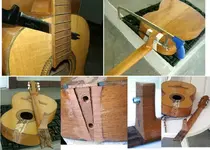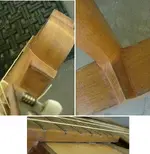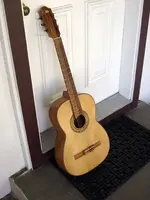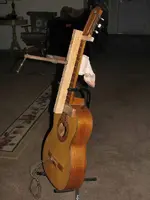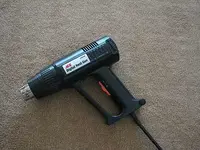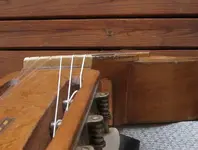crazydoc
Master Baiter
This has nothing to do with recording, but thought I'd show a neck reset I did this last week on an old Mexican classical guitar with high action I had lying around, using the method outlined here: http://www.frets.com/FRETSPages/Luthier/Technique/Guitar/NeckReset/BCRIchReset/bcrichreset1.html
I heated the fingerboard with a hair dryer, slid the ginsu knife between it and the guitar top to loosen it, and cut throught the heel with hacksaw to remove the neck. Reset the neck angle on the heel with a disk sander, drilled bolt holes through the heel block into the guitar, drilled holes for the inserts in the neck, and bolted through from the inside.
My hand hurts.
I heated the fingerboard with a hair dryer, slid the ginsu knife between it and the guitar top to loosen it, and cut throught the heel with hacksaw to remove the neck. Reset the neck angle on the heel with a disk sander, drilled bolt holes through the heel block into the guitar, drilled holes for the inserts in the neck, and bolted through from the inside.
My hand hurts.

